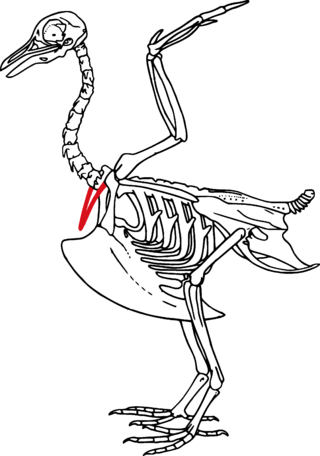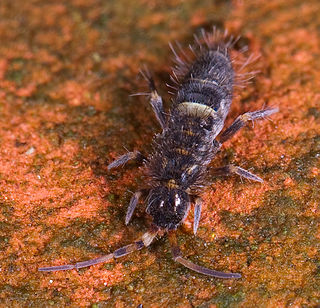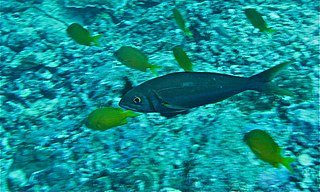Furca (Latin for "fork"), plural forms furcae or furcas, or its diminutive, furcula, may refer to:
Furca (Latin for "fork"), plural forms furcae or furcas, or its diminutive, furcula, may refer to:
Drachma may refer to:
In software engineering, a project fork happens when developers take a copy of source code from one software package and start independent development on it, creating a distinct and separate piece of software. The term often implies not merely a development branch, but also a split in the developer community; as such, it is a form of schism. Grounds for forking are varying user preferences and stagnated or discontinued development of the original software.
A fork is a utensil for eating and cooking.
Yala may refer to:
Valeria may refer to:
Wishbone commonly refers to Furcula, a fork-shaped bone in birds and some dinosaurs
Unadilla may refer to:

The furcula or wishbone is a forked bone found in most birds and some species of non-avian dinosaurs, and is formed by the fusion of the two clavicles. In birds, its primary function is in the strengthening of the thoracic skeleton to withstand the rigors of flight.

The furcula, or furca is a forked, tail-like appendage. It is present in most species of springtails, and in them it is attached ventrally to the fourth abdominal segment. The organ most often is present in species of Collembola that lives in the upper soil layers where it is used for jumping to avoid predators. While at rest, it is retracted under the abdomen and held there by a structure variously called the retinaculum or hamula, which in turn is located beneath the third abdominal segment. When the furcula escapes from retinaculum, it swings downwards and hits the substrate, propelling the springtail into the air. The animal does not use this mechanism for ordinary locomotion, but only for escaping from predators or severe stress.
Isotoma may refer to:
Nyx is the personification of the night in Greek mythology.
Seira may refer to:
Energia or Energiya may refer to:

Springtails (Collembola) form the largest of the three lineages of modern hexapods that are no longer considered insects. Although the three orders are sometimes grouped together in a class called Entognatha because they have internal mouthparts, they do not appear to be any more closely related to one another than they are to all insects, which have external mouthparts.
Mithila may refer to:
Furcinetechma sangaycola is a species of moth of the family Tortricidae. It is found in Pichincha Province, Ecuador.

A forked cross, is a Gothic cross in the form of the letter Y that is also known as a crucifixus dolorosus, furca, ypsilon cross, Y-cross, robber's cross or thief's cross.

Aphareus furca, the small toothed jobfish, blue smalltooth jobfish, fork-tailed snapper or snapper jobbyfish is a species of marine ray-finned fish, a snapper belonging to the family Lutjanidae. It is found in the Indo-Pacific region.

Holacanthella is a genus of giant springtails in the family Neanuridae, found only in New Zealand. Up to 17 mm in length, they are the largest springtails in the world.
Paradoxus is a genus of moths of the family Yponomeutidae.